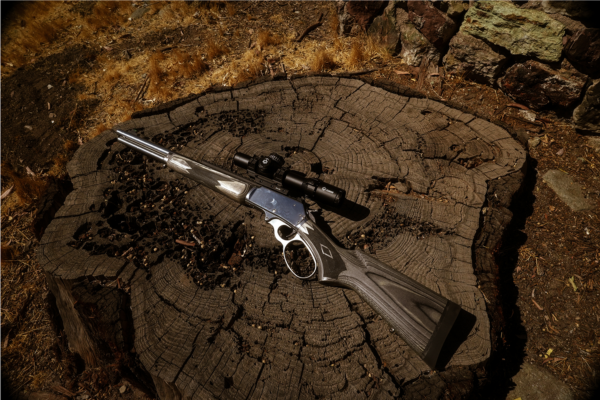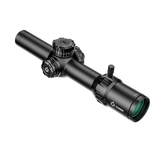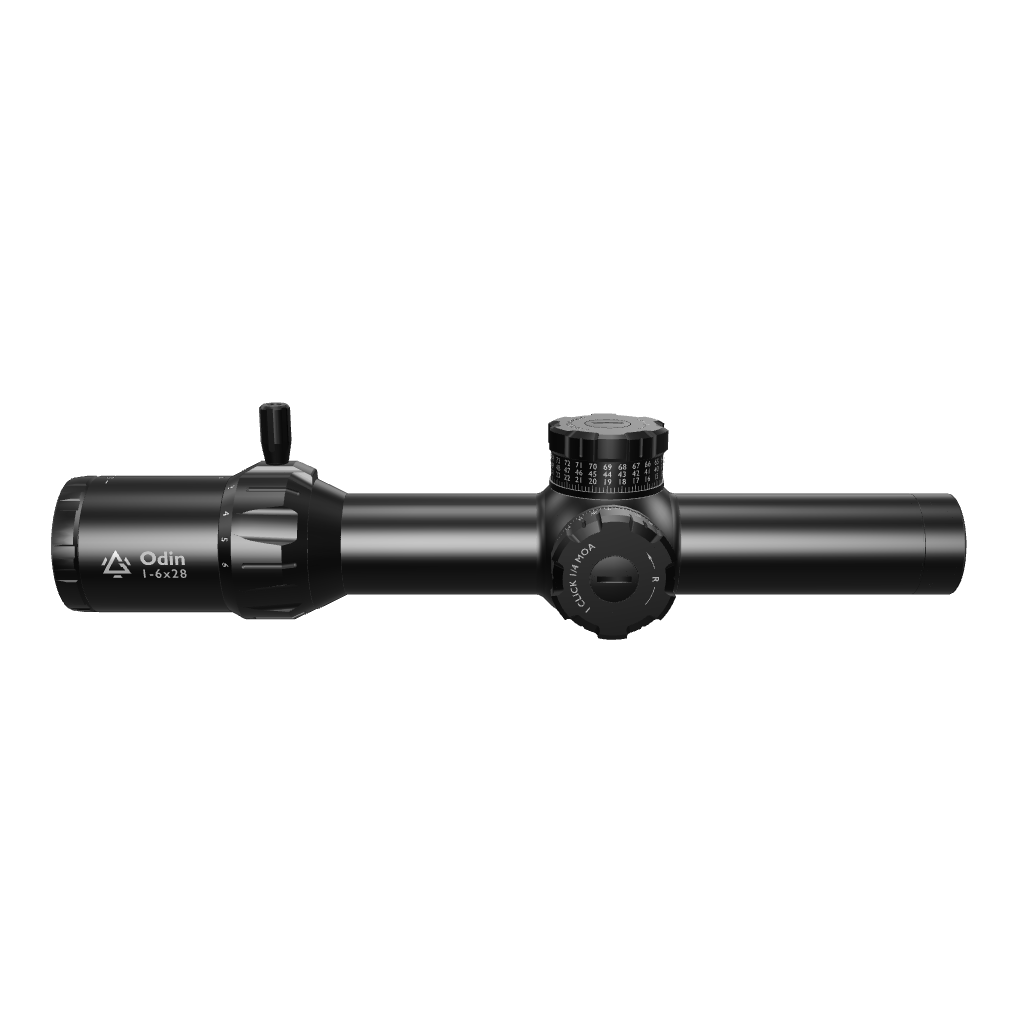How to Choose an LPVO for CQB
Today, the Low Power Variable Optic (LPVO) reigns supreme as a versatile option for modern sporting rifles. But when it comes to CQB, is LPVO a good choice?
The answer depends entirely on your setup, training, and priorities. Let’s break down everything you need to know about choosing and utilizing an LPVO for CQB.
Why LPVOs for Close Quarter Combat?
CQB, or Close Quarter Battle, requires a much more dynamic choice like the red dot sight because of high-stress engagements at very short distances, which often are under 25 yards.
A Low Power Variable Optic (LPVO) is a magnified scope that starts at true 1x power and typically extends up to 4x, 6x, 8x, or even 10x magnification.
While most riflemen might say running an LPVO for close-quarter combat is a bad idea, we’ve seen how the AR-15 has evolved significantly. Gone are the days when you only ran a simple red dot for anything under 100 yards.
That being said, the goal of using an LPVO for CQB is to achieve red-dot speed while retaining the ability to engage distant targets.

What are the Most Common LPVOs for CQB?
Effective LPVO CQB setups require expert discussions regarding scopes with a maximum magnification of 1-4x, 1- 6x, or 1-8x LPVOs.
The 1-6x is arguably the most common and versatile choice. This is because it offers a perfect blend of a wide field of view at 1x and sufficient capability for mid-range (300-600 yard) target identification and engagement at 6x.
As a customer tip, when looking for common LPVOs, you should prioritize a reticle that is brightly illuminated, offering true daylight visibility, and a forgiving eye box at 1x.
How to Choose an LPVO for CQB (What to consider)
Choosing the right LPVO for CQB requires looking beyond just the glass and considering the entire system. Your decision should be based on four main factors:
- True 1x Performance: Always look for zero distortion and a large field of view. At 1x, the image should be indistinguishable from a standard window.
- Reticle Design and Illumination: Make sure the reticle functions like a red dot. This means a large, bright outer horseshoe or circle for quick acquisition, surrounding a small central dot for precision.
- Mounting Solution: Look for an LPVO with a quality, robust mount. Some LPVOs have cantilever mounts that push the optic forward to achieve proper eye relief on the AR platform. Quick-Detach (QD) mounts are also preferred for fast removal and reattachment.
- Focal Plane: Aim for Second Focal Plane (SFP) LPVO types. The reticle size remains constant at 1x, offering a faster, clearer dot. First Focal Plane (FFP) reticles grow and shrink, which can make the reticle too small at 1x.

Is an LPVO better than a Red Dot Sight for CQB?
The red dot vs. LPVO CQB debate is not about superiority, but specialization. A red dot is a specialist for speed and close-range, while an LPVO is a generalist.
Deciding between an LPVO for CQB and a red dot sight always depends on your specific needs.
- Red dot sights excel in speed and simplicity because they are lightweight, offer unlimited eye relief, and provide an unobstructed field of view.
- However, LPVOs shine when you have to switch from 1x for close-range to higher magnifications up to 6x or 8x. This allows for accurate mid-range shots without changing optics.
| Feature | LPVO (Low Power Variable Optic) | Red Dot Sight (RDS) |
| Speed during close-quarters combat | Good. However, it’s fractionally slower due to the smaller exit pupil/eyebox. | Superior. Offers unlimited eye relief and faster sight acquisition from unconventional positions. |
| Long Range | Excellent. Precision and identification up to 600+ yards. | Poor. Requires a flip-to-side magnifier, which adds weight and bulk, and offers less clarity. |
| Low Light | Depends. Requires a battery for a visible daylight dot, but the etched reticle is a backup. | Good. Typically offers superb battery life and is fast in low-light situations. |
Final Verdict:
If you prefer shooting within 50 yards and in (e.g., home defense or purely indoor range work), a quality red dot is your best bet.
Suppose your shooting needs involve rapidly transitioning from room-clearing distances to targets out to 300 yards (like in 3-Gun competition or hunting applications). In that case, an LPVO for CQB is the superior, necessary choice.

Pros and Cons of LPVOs for CQB
Before you decide to go for a CQB LPVO, you need to assess the trade-offs. While it’s incredibly versatile, no optic system is perfect for every occasion:
Pros:
- Target Acquisition and Precision: A CQB LPVO gives you a 1x; you have a fast red-dot-like sight. Dialing up to 4x or 6x allows for clear target confirmation in case your target goes farther off. This is a significant advantage over non-magnified optics past 75 yards.
- Ballistic Holdovers: The integrated BDC (Bullet Drop Compensator) or MRAD/MOA reticles allow for fast, precise holdovers at extended ranges, making it a true dual-purpose optic.
- Passive Use: Most LPVOs have an etched reticle, which remains visible even if the battery dies or illumination fails.
Cons:
- Weight and Bulk: An LPVO is significantly heavier than a red dot.
- Eye Relief and Eyebox: You’re forced to maintain a consistent, correct head position and eye relief, which can be challenging during unconventional shooting positions or when shooting on the move.
- Magnification Dial: The need to adjust a wonky magnification dial is annoying and could be a major dealbreaker for many. It’s an unnecessary extra step compared to a fixed 1x optic.
Training with your LPVO for CQB
Choosing an LPVO for close-quarter combat is useless without proper CQB training. When running an LPVO CQB setup, training every once in a while is key to properly getting used to the setup, particularly at 1x.
Essential CQB LPVO Training Tips:
- Bindon Aiming Concept (BAC): The ‘both eyes open’ shooting concept is important to consider. In the drills, your non-dominant eye provides situational awareness while the scope's illuminated reticle is superimposed onto the target via your dominant eye.
- Fast Magnification Manipulation: Throw levers like cat tails usually do the job to ensure lighting-fast magnification adjustment. Practice running the lever without breaking your cheek weld.
- Unconventional Positions: Practice your shooting from different positions like the high-ready, deep low-ready, or through barriers like hay bales. The restrictive eye relief on an LPVO will force you to master your shooting in CQB scenarios.
- Transition to Offsets: If you want to go minimal, try adding a 45-degree offset red dot alongside your LPVO. This allows for an instant switch to a true 1x optic without touching the throw lever.

Best LPVOs for CQB From Gunnr
If you're looking for high-quality optics for your CQB-capable rifle, Gunnr recommends optics with a proven track record in 3-Gun competition, which are a perfect combo for blending speed and precision.
Whether you are on a budget or ready for a premium optic, we consistently recommend the 1−6x power range, as it provides the optimal balance of speed and magnification necessary for the vast majority of shooting scenarios.
Ultimately, your rifle is only as good as the system you build around it. For CQB, the Odin 1-6x28 LPVO offers an ideal magnification range and CQB for efficiency in every possible magnification range within the capabilities of an LPVO.
What you get is:
- True 1x magnification
- Illuminated Reticles with German Schott glass lenses for perfect image clarity in low light
- Lightweight, IP67 waterproof scope with 4.8×1.65×2.44 inches in size
- Cantilever mounts compatible with Picatinny rails that need no additional adapters
- 7075 aluminum alloy exterior for durability, tested to withstand 1000 impacts at 1000G and 2,000 live-fire rounds.
Ensure you back up your great optic choice with a quality mount, a reliable rifle sling, and most importantly, consistent, focused training. Master that 1x speed, and you’ll reap the rewards of magnification when the distance demands it.







